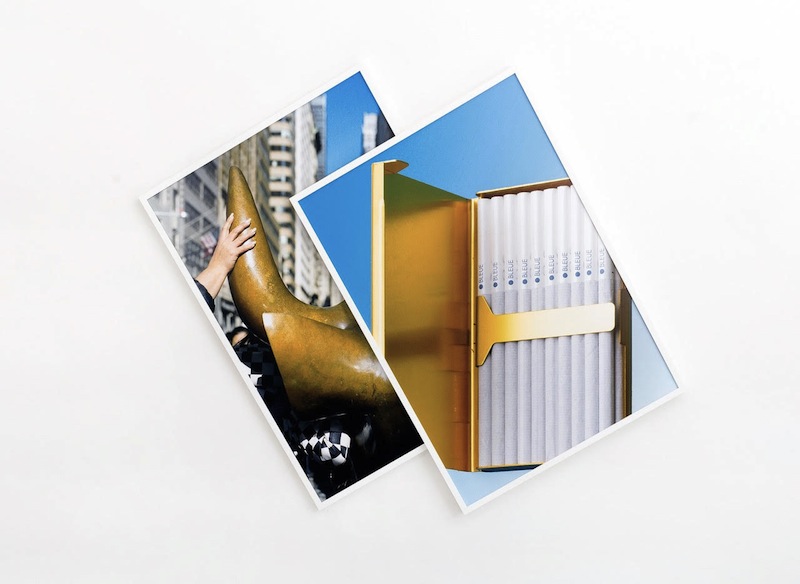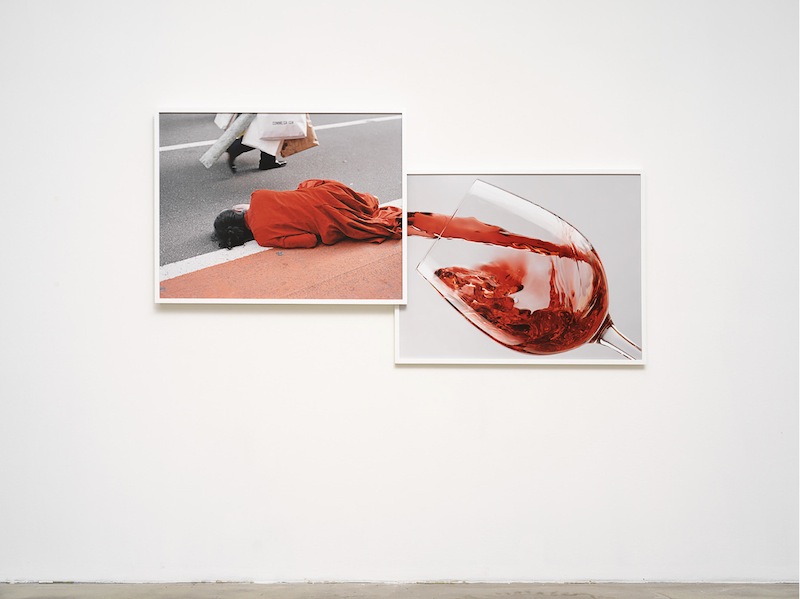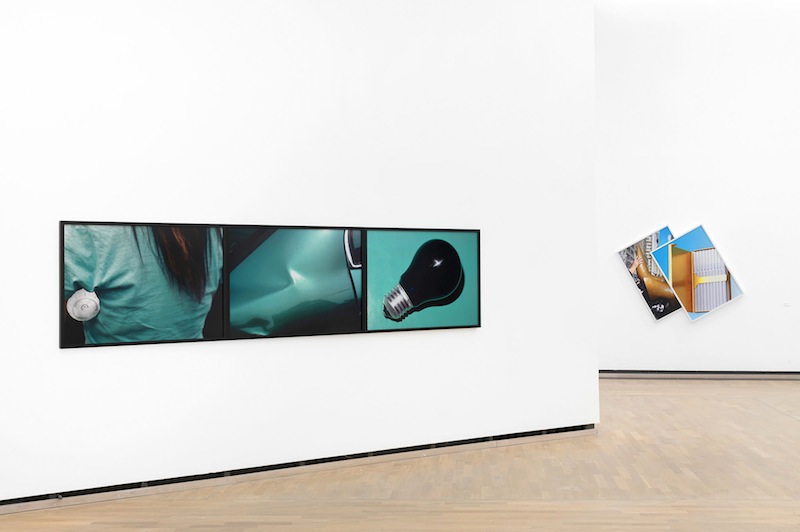Interview by Bárbara Borges de Campos // Mar. 26, 2020
This year the inaugural edition of the Henie Onstad Triennial for Photography and New Media brought together 31 international artists to an exhibition in Norway, the first of its kind in the country. This edition focuses on artistic practices that examine the contemporary condition of photography, as it is a medium that has been greatly democratized with new technology. From collage to AI and abstraction, the works on view respond to the theme of ‘New Visions,’ a reference to László Moholy-Nagy’s ideas, which revolutionized photography in the interwar period.
One of the triennial’s participants is Berlin-based artist Viktoria Binschtok, whose work is based on the interplay between found images, algorithms and the creation of original work. Binschtok’s practice examines the limits of our image-based society, the notions of public and private when it comes to image-sharing and their relationship to AI and randomised algorithms.

Viktoria Binschtok: ‘Golden Case/ Golden Horn,’ 2017, 2 digital c-prints, 110 x 130 cm; custom frames, ed. 3+1 a.p. // Courtesy of the artist and Klemm’s, Berlin
Bárbara Borges de Campos: How is the work you present here related to the theme of ‘New Visions’?
Viktoria Binschtok: I am interested in how new technologies, social media, smartphones, etc. have changed our visual world in the past decades. Artificial intelligence is also an important aspect of my work and I think that this is very relevant to the topic of ‘New Visions’: to investigate the influence of algorithms on our perception of the world. Since they are not visible, they are difficult to display. In my work, I also want to visualize this algorithmic omnipresence and thematize its power.
BBC: There has been a lot of debate surrounding privacy and ownership of online images, which is partly the basis of your practice. How do you see this division between private and public?
VB: As soon as one shares pictures online, they become part of the “public.” Everyone should know that. Images can be copied, reproduced and shared—that is part of our networked culture. Originality and authorship are therefore not always clearly recognizable. Digital networking creates a mixture between private and public images. For example, individuals like the Kardashians can become influencers, which increases the relevance of their images to the public, even if they come from a private context. Their idea of beauty and lifestyle was established through images and also became a billion-dollar business.
Since I am interested in image culture, I have to find a way to quote these images. There are various methods of image-appropriation such as collage, cut-outs or one-to-one copy. The choice of technique is very much related to the artistic concept. I’ve always worked with found footage of media images because I find it interesting that we perceive the world through images. So it’s worth it to look closer at them and to see what’s behind this visual layer.

Viktoria Binschtok: ‘Red Man Wine’, 2019, 2 digital c-prints, custom-made frames, 120 × 205 × 10 cm, ed. 3+1 a.p // Courtesy of Klemm’s Berlin
BBC: When you search for images to use in your work do you ever feel like you are collaborating with an algorithm or AI?
VB: Yes, it’s definitely a collaboration between me and the machine: I hand over part of my work to the image search algorithm. This way I can see images that I wouldn’t otherwise get to see. The search engine is my tool, like a fishing rod with which I search for images in this online infinity pool, in order to visualize a cross-section of our current image production, which has changed significantly over the past decades.
BBC: A work like ‘Red Man Wine’ seems like a conversation between two photos, but they have been arranged. How do you pair images? How do you visualise this dialogue ahead of time?
VB: ‘Red Man Wine’ is one of my several ‘Networked Images.’ They deal with the simultaneity and networking of an unmanageable number of pictorial realities that surround us on the internet at every moment. Screen time and offline time often switch back and forth in our everyday life. Our gaze jumps between information on the mobile device and in the environment in which we are physically, at that moment. I try to simulate this visual experience. Therefore, I combine my own photographs taken in the physical world with found online images, which I appropriate by re-creating them in my studio.
As a result, the originally fluid jpgs become their material representatives. As the image-search-algorithm only searches for similarities between images, my work combines photographs from different contexts that only relate visually to one another. The viewer cannot decode which image was generated by the image-search and which was originally created by me. Both images of ‘Red Man Wine’ are linked to each other via one part and thus merge into an overall impression. Even if the content of these pictures seems to be completely random, nevertheless, they give you an impression of the current ‘Zeitgeist’ of our western culture.

Viktoria Binschtok: ‘Bottle Bump Bulb’ 2017, 3 digital c-prints, 80 x 330 cm; ed.31+1 a.p; ‘Golden Case / Golden Horn’, 2017, 2 digital c-prints, 110 x 130 cm; custom frames, ed. 3+1 a.p. // Exhibition view of ‘New Visions’ at Henie Onstad Art Center, courtesy ofKlemm’s Berlin
BBC: Given the current pandemic it looks like we will be going through a period where all images, and works, will just be looked at online. How do you think this will change artistic production and society?
VB: We do not yet know exactly how long this phase of social distancing will be necessary. I think possible changes in artistic production will depend heavily on the duration of this crisis. First of all, many museums, institutions and artists use their social media channels to continue to make their work visible and convey it, e.g. through virtual tours through exhibitions, etc. I can imagine that other new formats could also be created that go beyond the mere documentation of works. All in all, the pandemic hits the self-employed creatives particularly hard, of course, since we have no income without presence. If the government does not respond quickly and offers uncomplicated financial aid, it will destroy many livelihoods. That would be a disaster not only for each of us but also a social disaster. Now, in the crisis it is becoming clear how precarious and insecure work in the cultural sector is for most of us. If the crisis has a positive effect, it is a rethinking of cultural policy in terms of promoting and securing the cultural sector. An unconditional basic income could contribute to this, but also, for example, a reduction in VAT from 19 to 7 percent for all artistic output, regardless of the medium.
Exhibition Info
HENIE ONSTAD TRIENNIAL
‘New Visions’
Exhibition: Temporarily closed until April 12, 2020
Sonja Henies vei 31, 1311 Høvikodden, Norway, click here for map





















